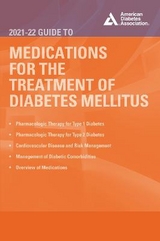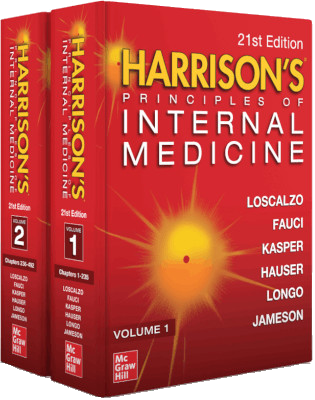
The 2020-21 Guide to Medications for the Therapy of Diabetes Mellitus
Seiten
2020
American Diabetes Association (Verlag)
978-1-58040-767-0 (ISBN)
American Diabetes Association (Verlag)
978-1-58040-767-0 (ISBN)
- Titel ist leider vergriffen;
keine Neuauflage - Artikel merken
Zu diesem Artikel existiert eine Nachauflage
Newly updated to reflect the latest research and medical guidance, the 2020-21 Guide to Medications for the Treatment of Diabetes offers a bridge between drug handbooks and pharmacology texts.
Focusing entirely on diabetes drugs, this reference is divided into two sections:
Drugs used to manage hyperglycemia, and
Management of diabetic comorbidities.
The first section includes:
Pharmacologic Therapy for Type 1 Diabetes
Management of Hyperglycemia in Type 1 DM- info from practical use of insulin, pathophysiology, treatment strategy
Insulins: RAIAs, Short-acting insulins, intermediate-acting insulins, LAIAs, Concentrated Insulins, Insulin pumps and patches, inhaled insulins, mixed and mixing insulin, use in Type 1, use in Type 2
Pharmacologic Therapy for Type 2 Diabetes
Management of Hyperglycemia in Type 2- brief overview, pathophysiology, treatment strategy, overview of medications
Biguanides
TZDs
SUs
Glinides
SGLT-2 Inhibitors
AGIs
DPP-IV inhibitors
GLP Ras
Amylin mimetics
BARs
DA-2 agonists
Each chapter in Section 1 includes:
Drug class overview and role in diabetes treatment
Pharmacology: a. Mechanism of action, b. Pharmacokinetics
Treatment Advantages/Disadvantages: General for the class, b. When applicable, a discussion of evidence that supports the benefits of using a particular drug in a class over another in the same class (eg, Avandia vs Actos)
Therapeutic Considerations: a. Significant Warnings/Precautions, b. Special Populations, c. Pharmacogenomics, d. Adverse effects and monitoring, e. Drug Interactions, f. Dosage and administration
Table with Doses and Dose Adjustments
List of important combination products
References
The second section includes:
Cardiovascular Disease and Risk Management
Microvascular Complications and Foot Care
Medications for the Management of Hypertension
Medications for the Management of Hyperlipidemia
Antiplatelet Therapy
Medications for Smoking Cessation
Medications for the Management of Neuropathy (peripheral and autonomic)
Medications for the Management of Nephropathy
Medications for the Management of Retinopathy
Medications for the Management of Depression
Medications for the Management of Hypoglycemia
Medications for the Management of Obesity
Immunizations in Patients with Diabetes
Each chapter in Section 2 includes:
An overview of the condition or problem
Goals of treatment
Overview of the medications and rationale for the medications used for the problem
Overview of each class of medication
Overview of combination therapy: a. first combination, b. second combination
Doses and Dose Adjustments for the more salient medications
List of important combination products
References
Focusing entirely on diabetes drugs, this reference is divided into two sections:
Drugs used to manage hyperglycemia, and
Management of diabetic comorbidities.
The first section includes:
Pharmacologic Therapy for Type 1 Diabetes
Management of Hyperglycemia in Type 1 DM- info from practical use of insulin, pathophysiology, treatment strategy
Insulins: RAIAs, Short-acting insulins, intermediate-acting insulins, LAIAs, Concentrated Insulins, Insulin pumps and patches, inhaled insulins, mixed and mixing insulin, use in Type 1, use in Type 2
Pharmacologic Therapy for Type 2 Diabetes
Management of Hyperglycemia in Type 2- brief overview, pathophysiology, treatment strategy, overview of medications
Biguanides
TZDs
SUs
Glinides
SGLT-2 Inhibitors
AGIs
DPP-IV inhibitors
GLP Ras
Amylin mimetics
BARs
DA-2 agonists
Each chapter in Section 1 includes:
Drug class overview and role in diabetes treatment
Pharmacology: a. Mechanism of action, b. Pharmacokinetics
Treatment Advantages/Disadvantages: General for the class, b. When applicable, a discussion of evidence that supports the benefits of using a particular drug in a class over another in the same class (eg, Avandia vs Actos)
Therapeutic Considerations: a. Significant Warnings/Precautions, b. Special Populations, c. Pharmacogenomics, d. Adverse effects and monitoring, e. Drug Interactions, f. Dosage and administration
Table with Doses and Dose Adjustments
List of important combination products
References
The second section includes:
Cardiovascular Disease and Risk Management
Microvascular Complications and Foot Care
Medications for the Management of Hypertension
Medications for the Management of Hyperlipidemia
Antiplatelet Therapy
Medications for Smoking Cessation
Medications for the Management of Neuropathy (peripheral and autonomic)
Medications for the Management of Nephropathy
Medications for the Management of Retinopathy
Medications for the Management of Depression
Medications for the Management of Hypoglycemia
Medications for the Management of Obesity
Immunizations in Patients with Diabetes
Each chapter in Section 2 includes:
An overview of the condition or problem
Goals of treatment
Overview of the medications and rationale for the medications used for the problem
Overview of each class of medication
Overview of combination therapy: a. first combination, b. second combination
Doses and Dose Adjustments for the more salient medications
List of important combination products
References
John R. White, Jr., PA-C, PharmD, is Chair and the R. Keith Campbell Distinguished Professor in Diabetes Care of the Department of Pharmacotherapy at the Washington State University College of Pharmacy. Dr. White is the author of three books, 29 book chapters, and more than 150 manuscripts on diabetes medications. In addition to his teaching responsibilities at the university, he is a sought-after speaker and has given over 330 lectures at domestic and international conferences. He has been on the editorial boards of many diabetes-related scholarly journals and is currently Associate Editor of Clinical Diabetes.
| Erscheint lt. Verlag | 29.10.2020 |
|---|---|
| Zusatzinfo | Illustrations |
| Verlagsort | Alexandria |
| Sprache | englisch |
| Maße | 152 x 228 mm |
| Themenwelt | Medizinische Fachgebiete ► Innere Medizin ► Diabetologie |
| Medizinische Fachgebiete ► Innere Medizin ► Endokrinologie | |
| Medizin / Pharmazie ► Medizinische Fachgebiete ► Pharmakologie / Pharmakotherapie | |
| Studium ► 1. Studienabschnitt (Vorklinik) ► Biochemie / Molekularbiologie | |
| ISBN-10 | 1-58040-767-6 / 1580407676 |
| ISBN-13 | 978-1-58040-767-0 / 9781580407670 |
| Zustand | Neuware |
| Haben Sie eine Frage zum Produkt? |
Mehr entdecken
aus dem Bereich
aus dem Bereich
Vol. 1 & 2
Buch | Hardcover (2022)
McGraw-Hill Companies (Verlag)
229,99 €



